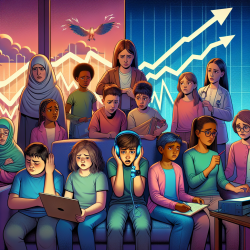Understanding Cyberbullying: The Role of Social Support in Mitigating Depression
In the digital age, cyberbullying has emerged as a significant concern for educators, parents, and mental health professionals. The research article titled "Cyberbullying Involvement and Depression among Elementary School, Middle School, High School, and University Students: The Role of Social Support and Gender" provides critical insights into how cyberbullying affects different age groups and the role of social support in mitigating these effects.
Key Findings
The study involved 1309 participants across various educational levels, revealing that middle school students are the most involved in cyberbullying, followed by high school and university students, with elementary school students being the least involved. Notably, gender differences were observed, particularly among elementary school students, where boys were more often involved in cyberbullying perpetration and victimization than girls.
Impact of Social Support
One of the pivotal findings of this study is the buffering effect of social support from parents and friends on the relationship between cyberbullying involvement and depression. Social support from parents was found to buffer against the negative effects of cyberbullying across all age groups, while support from friends was particularly beneficial for middle and high school students.
- Parental Support: Across all age groups, higher levels of perceived parental support were associated with lower levels of depression and cyberbullying involvement.
- Peer Support: For middle and high school students, peer support played a significant role in reducing depression linked to cyberbullying involvement.
Implications for Practitioners
These findings underscore the importance of integrating social support mechanisms into intervention programs aimed at reducing cyberbullying and its negative outcomes. Practitioners working with children and adolescents can enhance their strategies by:
- Encouraging parental involvement and open communication about online activities.
- Facilitating peer support groups where students can share experiences and coping strategies.
- Implementing educational programs that teach effective online behavior and coping mechanisms.
Encouraging Further Research
While this study provides valuable insights, it also highlights the need for further research to explore the longitudinal effects of cyberbullying and the role of social support over time. Future studies could focus on the impact of technology use and the interaction between online and offline social support systems.
To read the original research paper, please follow this link: Cyberbullying Involvement and Depression among Elementary School, Middle School, High School, and University Students: The Role of Social Support and Gender.










